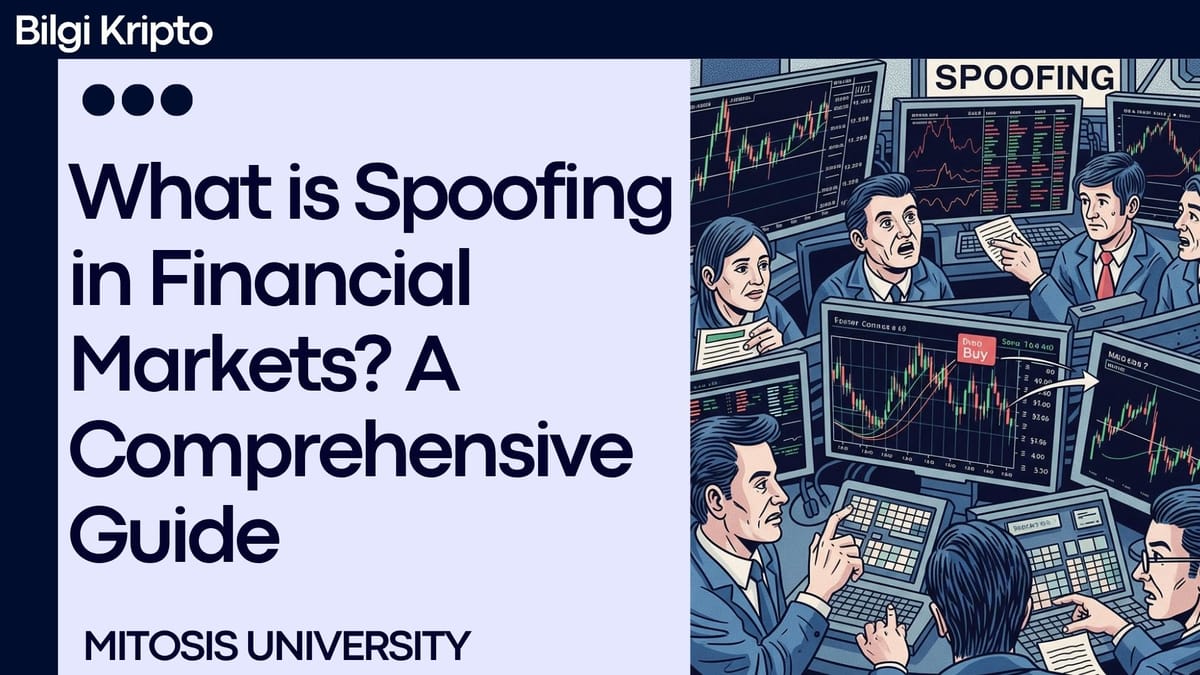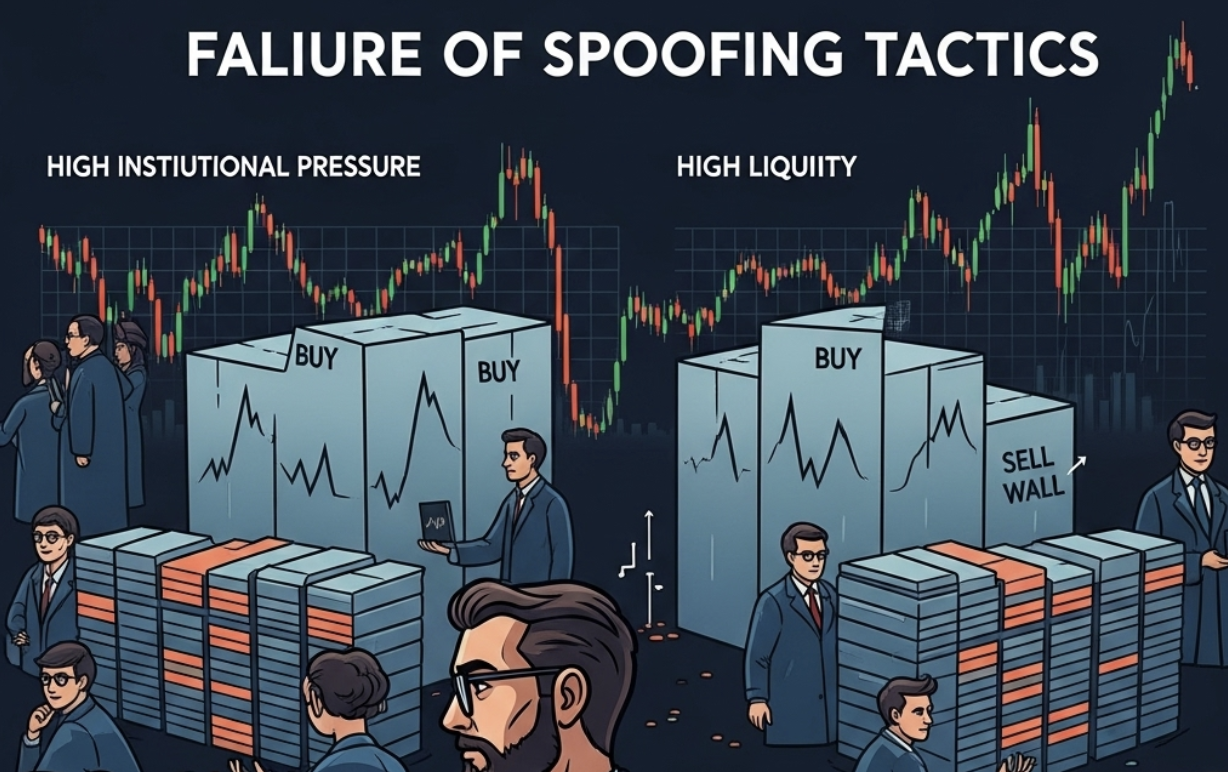What is Spoofing in Financial Markets? A Comprehensive Guide

Introduction: The Invisible Face of Manipulation
While cryptocurrency markets have gained massive interest from both retail and institutional investors in recent years, manipulative practices within these markets continue to be a hot topic. Especially in high-volatility digital assets, bad actors often find fertile ground to steer prices using deceptive trading tactics. One of the most notorious among them is a technique called spoofing.
In this article, we will explore what spoofing is, how it works in crypto, its impact on the markets, and what regulatory bodies are doing to tackle it.
What Is Spoofing?
Spoofing is the act of placing large buy or sell orders with no intention of executing them, purely to mislead other traders and manipulate market sentiment. These fake orders are designed to create an illusion of heavy demand or supply at certain price levels. Spoofing is typically carried out using automated algorithms or trading bots and often involves canceling the orders before they are filled.
How Is Spoofing Done in Crypto?
In cryptocurrency markets, spoofing is often executed through bots that place large, fake orders at strategic levels. These orders are visible on the order book, creating an illusion of pressure. As the price moves toward the spoofed order level, the bots cancel the orders.
Example:
- A trader places a large sell order at $40,000 in the BTC/USDT pair.
- This creates an impression of strong selling pressure.
- Retail traders panic and start selling.
- As the price drops, the spoofer buys BTC at a lower price.
- The entire process happens in seconds and can be hard to detect in real time.

How Do Crypto Markets React to Spoofing?
Cryptocurrency markets, particularly in low-liquidity altcoin pairs, are highly sensitive to spoofing. Even in high-volume centralized exchanges like Binance, KuCoin, or Bybit, smaller trading pairs can be easily manipulated through order book tricks.
Spoofing is particularly effective under the following conditions:
- When market liquidity is low,
- At psychological support or resistance levels,
- When leveraged positions in derivatives are at risk.
Spoofing doesn't just affect spot markets it significantly impacts derivatives markets as well. Changes in funding rates, liquidation levels, and open interest are often observed after spoofing actions. These metrics can cause traders to open riskier positions based on false assumptions.
Why Is Spoofing Dangerous?
In crypto markets, spoofing not only deceives individual investors but also erodes trust and transparency across the ecosystem. Decisions made based on fake orders create unnatural price movements, causing instability.
Key harms of spoofing include:
- Sudden losses for retail investors,
- Erosion of trust in the market,
- Unstable and misleading price action,
- Increased liquidations in leveraged trading,
- Forced exit of positions that were not supposed to close.
Novice traders are especially vulnerable, as they may misinterpret large visible orders as genuine market intent.
When Does Spoofing Become Ineffective?
Spoofing doesn't always work. There are market conditions under which this tactic fails and even backfires.
For example:
- High volatility moments: When FOMO or panic-selling kicks in, spoofed orders might get executed unintentionally, leading to losses for the spoofer.
- Institutional pressure: In markets with strong institutional interest, especially in spot buying, spoofing’s effect is greatly reduced.
- High-liquidity assets: Major assets like Bitcoin and Ethereum are harder to spoof due to deep liquidity.
- Experienced traders: Traders who analyze order books and price action on lower time frames can often detect spoofing and avoid its traps.

Is Spoofing Legal?
Spoofing is illegal in many jurisdictions. In the United States, such manipulative behavior is clearly banned under the Dodd-Frank Act (Section 747, 2010). The Commodity Futures Trading Commission (CFTC) and Securities and Exchange Commission (SEC) enforce these rules and impose serious penalties on violators.
According to the CFTC, spoofing includes:
- Submitting or offering bids/asks with the intent to cancel before execution,
- Repetitive, misleading activity that creates artificial volume,
- Conduct that is knowingly or recklessly disruptive to fair market operations.
The United Kingdom also prohibits spoofing, with the Financial Conduct Authority (FCA) authorized to fine or ban responsible individuals or institutions. In Turkey, although regulations around cryptocurrencies are still evolving, traditional markets are monitored by the Capital Markets Board (SPK), which may adopt stricter rules in the future.
Why Are Crypto Markets More Vulnerable?
Compared to traditional finance, crypto markets are structurally more susceptible to spoofing due to:
- 24/7 trading with no centralized oversight,
- Non-KYC platforms where actors can remain anonymous,
- Transparent but easily manipulated order books,
- Limited enforcement mechanisms in many jurisdictions.
As a result, detecting spoofing isn’t enough traders must also be educated and alert. Awareness of such manipulative behavior is the best defense in decentralized and fast-moving environments.
Conclusion: Knowledge Is the Best Defense Against Spoofing
Spoofing is a widespread manipulation technique in crypto markets that involves placing fake orders to deceive other traders. Although difficult to detect in real time, spoofing can be mitigated through better education, responsible trading practices, and regulatory intervention.
As regulators continue to crack down on market manipulation and investors become more informed, we can expect a more stable and trustworthy crypto trading environment. Until then, being cautious and analytical is your best protection



Comments ()